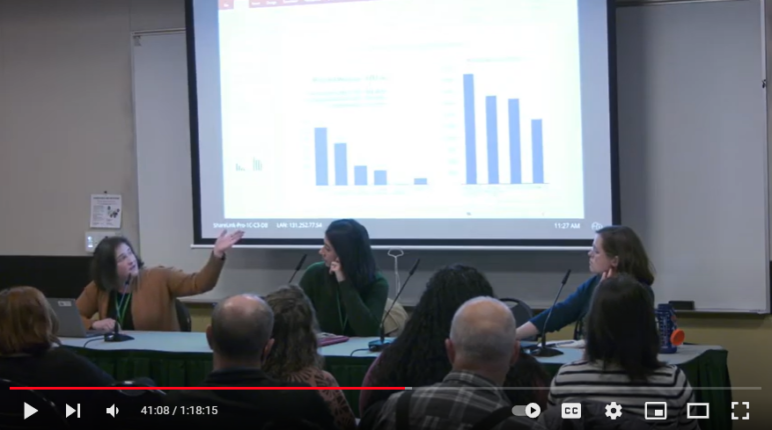The conversation shared below was part of the YIMBYtown 2022 conference, cohosted by Sightline Institute and Portland: Neighbors Welcome.*

Cassie Graves, with the Portland Housing Bureau, presents data on the performance of Portland’s inclusionary housing program (screenshot from video of session).
For almost two decades, Oregon’s cities were prohibited from using inclusionary housing as part of their toolkit to require market-rate developments to provide new housing for people living on low-to-moderate incomes. What was the intent behind lifting this ban in 2016? What have we learned? How do we move forward?
During this session, we brought together those who initiated its inception and those who are tracking its progress to get past the hot takes for a solutions-focused conversation.
Vivian Satterfield, Director of Strategic Partnerships with Verde, describes the motivations for lifting Oregon’s ban on inclusionary zoning and the long journey to pass Senate Bill 1533B in 2016.
Cassie Graves, Housing Program Specialist at Portland Housing Bureau, reviews the data on the first few years of Portland’s inclusionary housing program.
During questions, audience members dig into the tradeoffs associated with inclusionary housing and the possibility that Portland’s program has stifled development. Kate Macfarlane from Sightline moderated the discussion.
Related:
*YIMBYtown 2022 occurred April 11–13 in Portland, Oregon, the fourth annual gathering (after some COVID delays) of “Yes in My Back Yard” (YIMBY) community leaders, organizers, planners, policymakers, educators, and housing providers eager to share resources and strategies for building more affordable, sustainable, and equitable communities.







